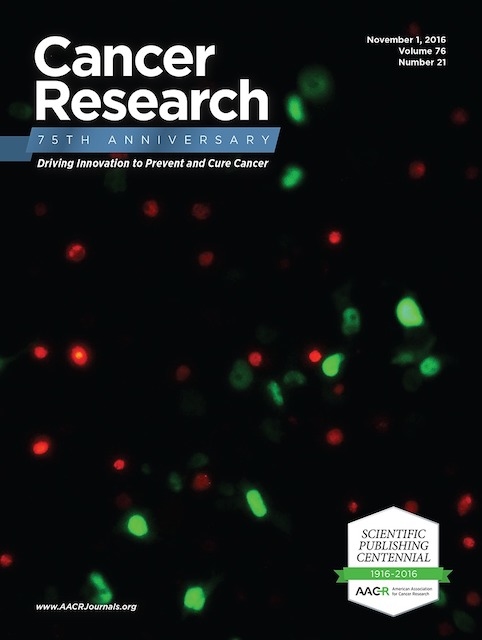癌症(Cancer) 或稱作惡性腫瘤(Malignant tumor),源自身體某個部位開始有細胞不正常的增生。腫瘤形成之後,可能從原本部位向周圍組織擴張,藉由淋巴和血管,轉移到身體的其他部位。大量癌細胞沒有限制地瘋狂生長,破壞重要器官功能,也佔據身體大部分的營養,導致病患最終因器官衰竭、營養不良、併發症而死亡。
越來越多的癌症患者開始使用輔助和綜合治療,例如按摩,針灸和瑜伽,以控制症狀並改善生活質量,通過降低組織剛度和改善活動性。
(Schleip R FT, Chaitow L, Huijing P. Fascia: the tensional network of the human body: the science and clinical applications in manual and movement therapy. Edinburgh, United Kingdom: Churchill Livingsone, Elsevier;
Langevin HM, Churchill DL, Cipolla MJ. Mechanical signaling through connective tissue: a mechanism for the therapeutic effect of acupuncture. FASEB J 2001;15:2275–82.)
癌症生物學的最新進展強調了結締組織在局部腫瘤環境中的重要性。炎症和纖維化是公認的導致癌症惡化的因素,結締組織僵硬成為腫瘤生長的驅動因素,按摩,針灸和瑜伽已顯示可減少結締組織炎症和纖維化,因此可能對癌症擴散和轉移有直接的有效益作用,而目前對在腫瘤附近施加機械力的潛在風險知之甚少。(Cancer Res; 76(21); 6159–62. ©2016 AACR.)
筋膜圍繞人體每個器官的結構,整合肌肉骨骼系統,並容納血液和淋巴管,(更有最新研究發現血液和淋巴屬於液態筋膜系統-Bruno Bordoni; Navid Mahabadi; Matthew Varacallo. Anatomy, Fascia. StatPearls Publishing; 2020 Jan-.)然後,淋巴管通過淋巴結將其組織中的局部化學信息通過淋巴結排到免疫系統。
慢性炎症和組織纖維化的病理過程導致結締組織變硬,還可能驅動腫瘤轉惡化(Albini A, Sporn MB. The tumour microenvironment as a target for chemoprevention. Nat Rev Cancer 2007;7:139–47.
Whiteside TL. The tumor microenvironment and its role in promoting tumor growth. Oncogene 2008;27:5904–12.)
結締組織和生物物理因子的關係也發現有很大的相關性,包括細胞外基質的硬度,排列,和孔隙率,可能會影響癌症的生長,結締組織(筋膜)硬度越高似乎癌細胞的生長越高。
(Rybinski B, Franco-Barraza J, Cukierman E. The wound healing, chronic fibrosis, and cancer progression triad. Physiol Genomics 2014;46:223–44.
Ingber DE. Can cancer be reversed by engineering the tumor microenvironment? Semin Cancer Biol 2008;18:356–64.
Spill F, Reynolds DS, Kamm RD, Zaman MH. Impact of the physical microenvironment on tumor progression and metastasis. Curr Opin Biotechnol 2016;40:41–8.)
在動物實驗中,發現增加的膠原蛋白沉積會促進腫瘤進展,儘管結締組織僵硬在癌症生物學中所起的作用這說法仍然存在許多疑問,但令人擔憂的是,常規的癌症治療方法(包括手術和放射療法)本身可能會導致纖維化和基質變硬
(Straub JM, New J, Hamilton CD, Lominska C, Shnayder Y, Thomas SM. Radiation-induced fibrosis: mechanisms and implications for therapy. J Cancer Res Clin Oncol 2015;141:1985–94.
Hayes SC, Johansson K, Stout NL, Prosnitz R, Armer JM, Gabram S, et al. Upper-body morbidity after breast cancer: incidence and evidence for evaluation, prevention, and management within a prospective surveillance model of care. Cancer 2012;118(8 Suppl):2237–49.)
目前的研究還是顯示運動可能會抑制癌症生長的生理反應可能是在能量代謝,改變免疫系統等等…,實驗顯示結締組織(筋膜)拉伸可能具有局部抗炎作用,與血管,神經或其他全身性因素無關)。代表可能可以通過主動或被動(例如在伸展運動,瑜伽,按摩或針灸過程中)施加的機械力來抑制惡性病變的生長,擴散和/或散佈。另一方面,是否對腫瘤施加機械壓力或剪切力可能會使惡性細胞脫落,並促使其遷移到淋巴管或血管中,研究發現那些按摩後的是剝落癌細胞,不是癌細胞轉移。
(Moore KH, Thaler HT, Tan LK, Borgen PI, Cody HS III.. Immunohistochemically detected tumor cells in the sentinel lymph nodes of patients with breast carcinoma: biologic metastasis or procedural artifact? Cancer 2004;100:929–34)
結論:越來越多的研究顯示可透過物理性的方式改變包覆著癌細胞外面的筋膜結締組織的硬度來影響癌細胞的發展,當然還需要更多的研究證據來支持。

參考資料:Connecting (T)issues: How Research in Fascia Biology Can Impact Integrative Oncology
Helene M. Langevin, Patricia Keely, Jun Mao, Lisa M. Hodge, Robert Schleip, Gary Deng, Boris Hinz, Melody A. Swartz, Beverley A. de Valois, Suzanna Zick and Thomas Findley
DOI: 10.1158/0008-5472.CAN-16-0753 Published November 2016




